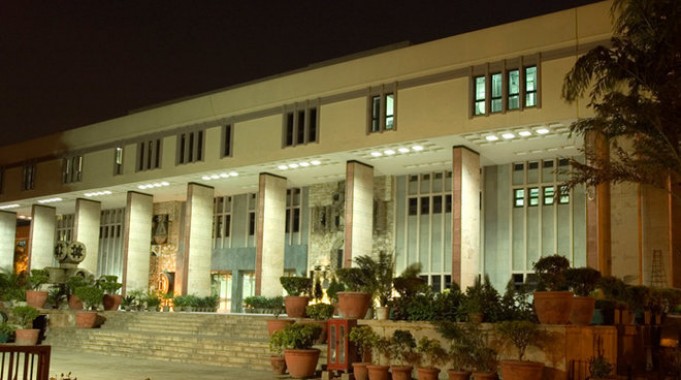Defamation lawsuits that drag on and on
The Delhi High Court (above) took 14 years to uphold a summons against the Times of India that a magistrate took five years to issue.
On April 21, the Additional District Judge at Delhi’s Tis Hazari Courts passed a judgment in a defamation lawsuit against Nav Bharat Times and others, 22 years after the lawsuit was filed in 1994. This isn’t the only such defamation case that has taken so long to be settled. The defamation lawsuit against Zee TV in the Connaught Place shootout case, which I have written about here, was disposed of after 18 years. That judgment too was from Tis Hazari.
The state of affairs is no better before the Delhi High Court. Last year I wrote about the Sunday Indian case where the Delhi High Court took eight years to hear and set aside a metropolitan magistrate’s order refusing to take cognisance of a criminal defamation complaint made by the Tatas against the Arindham Chaudhary run Sunday Indian.
In March this year, the Delhi High Court delivered a judgment on a petition filed by Dileep Padgaonkar and others seeking the quashing of a criminal defamation complaint filed against them in 2002, while they were editors etc. at the Times of India. The magistrate took five years to issue a summons in that case and the Magistrate’s order was upheld by the Delhi High Court in its judgment on March 9, 2016.
The painfully slow pace of this case is distressing given the seriousness of the allegation: the complainant in this case, FIIT JEE is a coaching institute which claimed that the Times of India published a malicious and defamatory article against it because the institute stopped advertising with it. I have earlier pointed out other instances of defamation cases being endlessly delayed in this fashion over here.
The lengthy delays are not the only concern. The three other concerns that stand are out are first the fact that public servants are filing defamation cases against the media for rather routine coverage, second the absolutely flimsy nature of some of these defamation complaints and third the failure to follow the malice standard laid down by the Supreme Court in the Rajagopal case. I’ll illustrate all these concerns with reference to recent judgments passed in the last few months.
Two of these recent judgments, including the case decided after 22 years, were the result of complaints filed by public servants. Such lawsuits aren’t rare – last year I documented at least 4 judgments delivered in defamation complaints by public servants.
The defamation lawsuit against Nav Bharat Times and some bureaucrats was filed by a bureaucrat who alleged that an article published in the newspaper about an inquiry into certain irregularities related to government work had defamed him.
This judgment which was delivered after 22 years, dismissed the lawsuit after a trial. The judge concluded that “What was reported in the newspaper was only fair reporting of the state of affair.”
A second judgment, from the Calcutta High Court, involved a story published by Anandabazar Patrika about the CBI petitioning the court for the transfer of a particular criminal case because the local police and public prosecutor were interfering with a fair trial. The public prosecutor mentioned in the report sued the paper for defamation and sought Rs. 50 lakhs in damages against the newspaper.
The Calcutta High Court refused to dismiss the lawsuit despite the paper merely reproducing portions from the CBI’s petition. The case will now go to trial. There is also the Connaught Place shootout case filed by the police inspectors who were convicted for murder.
As to frivolous complaints of defamation, the first case against Nav Bharat Times involved a newspaper report which did not even mention the public servant/complainant by name. Moreover, as was established in the trial, the story had more than a reasonable basis.
In a different judgment, in a petition filed by Matrubhumi before the Kerala High Court seeking the quashing of a criminal complaint alleging defamation by the newspaper, the High Court concluded that the article in question did not even refer to the complainant per se. The court says, “it is clear from an impartial reading of the same that reference is made only to direct marketing agencies in general and not to any particular individual or concern”. It took the High Court three years to quash the complaint.
On the issue of proving defamation, we explained in earlier articles how the Supreme Court and the Bombay High Court have raised the standards to prove a claim of defamation in the case of criticism of government or even private bodies discharging a public function.
As per this new standard, a government employee or private body discharging a public function that alleges defamation by the press will have to establish that the defendant had made the statements with malice. This standard is reasonably higher than the earlier standard where the onus was on the defendant to establish that the statement would appear to be fair to a reasonable person on the basis of information made available at the time.
As is often the case in India, the Supreme Court’s judgments are simply ignored by both lawyers and judges at the lower levels. All three judgments involving public servants – the Connaught Place shootout case, the Nav Bharat Times case and the Anandabazar Patrika case, did not discuss the ‘malice’ standard laid down in the Auto-Shankar case by the Supreme Court.
The shockingly long time taken to dispose of these cases, along with the frivolous nature of complaints and the propensity of public servants to sue for defamation, are indicators of the hazardous legal terrain faced by the Indian media while reporting in India.
Prashant Reddy Thikkavarapu is a lawyer.
